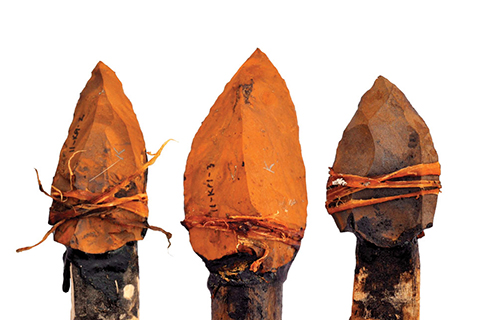A U of T-led team of anthropologists has found evidence that human ancestors used stone-tipped weapons 200,000 years earlier than previously thought – a discovery that could change ideas about how ancient peoples evolved.
Attaching stone points to spears – known as “hafting” – was an important advance in hunting weaponry for early humans. Hafted tools require more effort and planning to build, but a sharp stone point on the end of a spear can increase its killing power.
Hafted spear tips are common in Stone Age archeological sites starting 300,000 years ago. This new study, by Jayne Wilkins, a PhD candidate in anthropology, shows that they go back 500,000 years to the early Middle Pleistocene, a period associated with Homo heidelbergensis, the last common ancestor of Neanderthals and modern humans. “It now looks like some of the traits that we associate with modern humans and our nearest relatives can be traced further back in our lineage,” says Wilkins.
Wilkins and colleagues from Arizona State University and the University of Cape Town examined 500,000-year-old stone points from a South African archeological site and determined that they had functioned as spear tips.
The researchers compared wear on the ancient points to the damage inflicted on modern ones in an experiment in which a springbok carcass was repeatedly speared. The ancient stone points exhibit certain types of breaks that commonly occur when they are used as spear tips. “The archeological points have damage that is very similar to replica spear points used in our spearing experiment,” says Wilkins. “This type of damage is not easily created through other processes.” Wilkins’ study was published in Science.
Jayne Wilkins, a PhD student in archaeology, explains her research into hafted spear tips.





